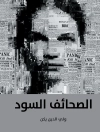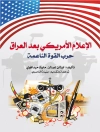Anyone talking about pictures by necessity refers to those using pictures. It is therefore essentially the competence of using pictures that has to be considered. Such competence is not common among higher developed mammals, at least as far as we know today. This fact raises the question whether and to what extent that ability has to be conceived as a strictly anthropological one. In an interdisciplinary approach, the first international conference of the Society for Interdisciplinary Image Science (Gi B) titled ›Origins of Pictures‹ has taken a closer look at the role of pictures for the conditio humana.
The primary goal of the conference was to present empirical findings of the origins of picture uses, considering in particular research in paleo-anthropology, archeology, cultural anthropology, and developmental psychology. Furthermore, those findings were to be related to philosophical considerations concerning the conditions of the conceptual formation of picture competence.
Tabella dei contenuti
Klaus Sachs-Hombach / Jörg R. J. Schirra
Introduction
I.Methodological Aspects of Picture Anthropology
Iain Davidson
Origins of Pictures: An Argument for Transformation of Signs
Jean Clottes
Consequences of the Discovery and Study of the Chauvet Cave
Lambros Malafouris
Learning to See: Enactive Discovery and the Prehistory of Pictorial Skill
Christa Sütterlin
Early Face Representation as Proto- or Archetype of Generalized Human Face Perception
II.Relation between Empirical Anthropological Investigations and Synthetic Philosophical Investigations
Søren Kjørup
Resemblance Reconsidered: Confessions and Concessions of a Conventionalist
Jörg R. J. Schirra; Klaus Sachs-Hombach
The Anthropological Function of Pictures
III.Archeological and Paleoanthropological Perspectives on the »First« Pictures
Christian Züchner
Symbols and Signs of the Earliest Art of Ancient Europe
Nicholas J. Conard; Harald Floss
Early Figurative Art and Musical Instruments From the Swabian Jura of Southwestern Germany and Their Implications for Human Evolution
Ekkehart Malotki
The Road to Iconicity in the Paleoart of the American West
Ellen Dissanayake
Born to Artify: The Universal Origin of Picturing
Tilman Lenssen-Erz
The Dark Ages of Picturing: Does Art Originate from Caves? A Synopsis
IV.Picture Competence in Developmental Psychology and the Role of Gestures and Facial Expressions
Göran Sonesson
The Picture Between Mirror and Mind: From Phenomenology to Empirical Studies in Pictorial Semiotics
John Matthews
Seven Spots and a Squiggle: The Prehistory of Pictures
Dieter Maurer
Early Pictures in Ontogeny and Phylogeny: Preliminaries to a Comparison
Sabine Völkel; Peter Ohler
Understanding Pictures in Early Childhood
V.Cultural Anthropology: On the Origins of Pictures and Picture-free Societies
Derek Hodgson
Ambiguity, Perception, and the First Representations
Joachim Knape
Image Textuality, Narrativity, and Pathos Formula: Reflections on the Rhetoric of the Image
Philipp Stoellger
The Image – As Strong as Death? On Death as the Origin of the Image
Helge Gerndt
When Do Images Emerge? Religious Image Practices in the Late Middle Ages
Hans Dieter Huber
Images of the Dead
Ekkehard Jürgens
Pictures – What For? Seven Hypotheses on the Origin of Art
The Authors
Circa l’autore
Klaus Sachs-Hombach, Jg. 1957, ist seit 2011 Professor für Medienwissenschaft (Medieninnovation / Medienwandel) an der Universität Tübingen. Jörg R. J. Schirra, geb. 1960, studierte Informatik, Physik, Philosophie, Linguistik und Psychologie an der Universität des Saarlandes. Gegenwärtig arbeitet er mit einer Gruppe von Bildwissenschaftlern an einem online-Glossar der Bildphilosophie.












